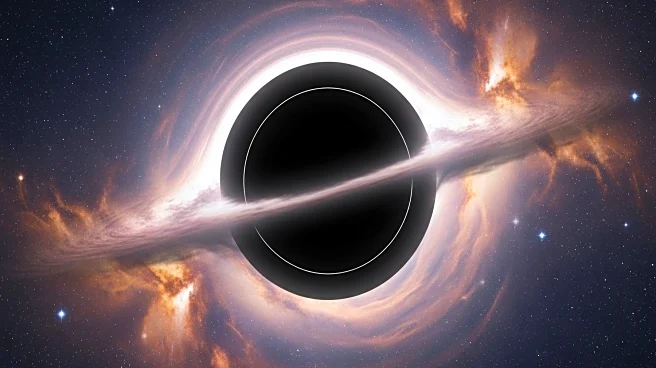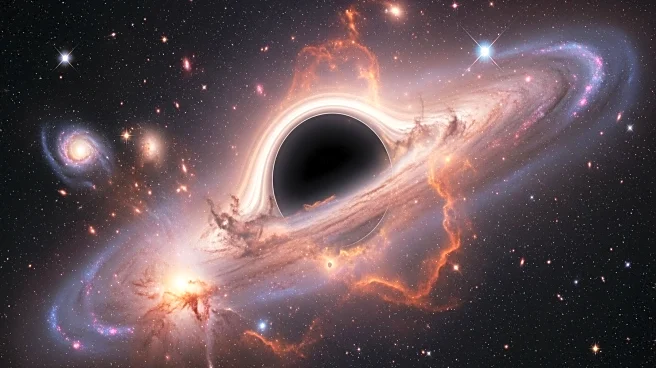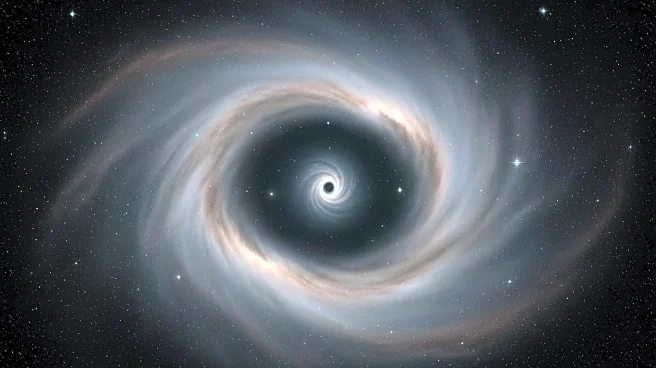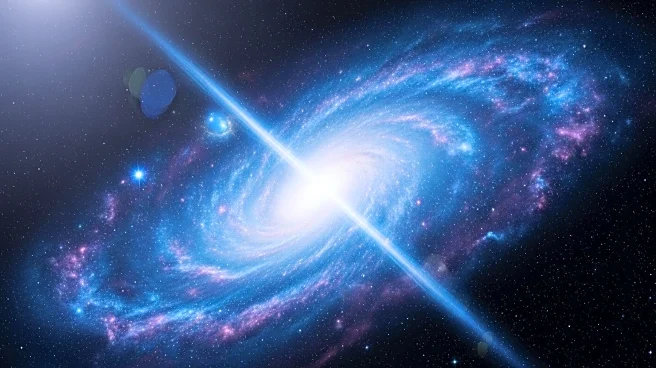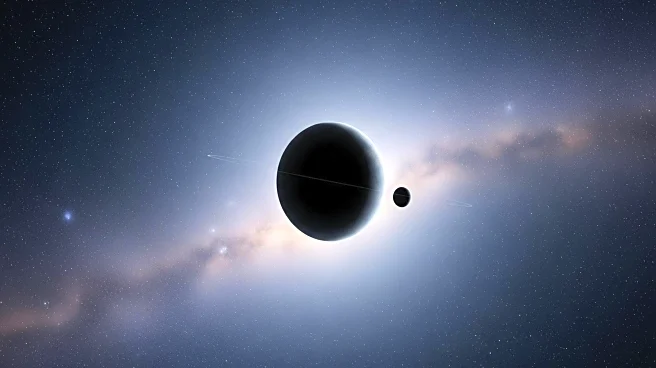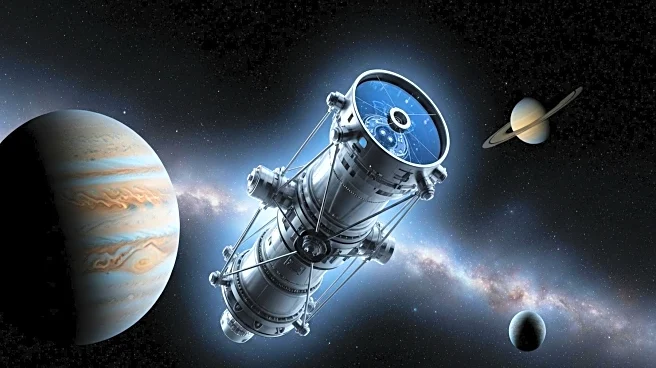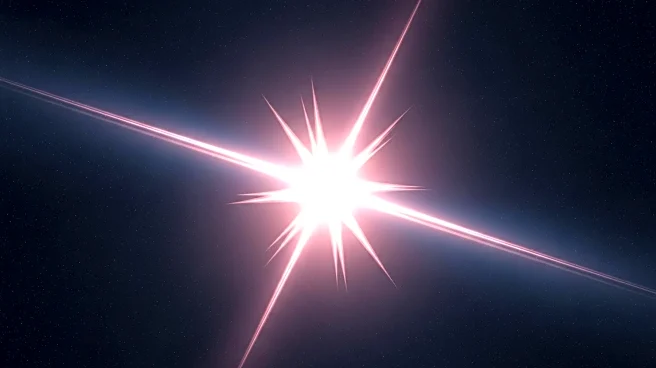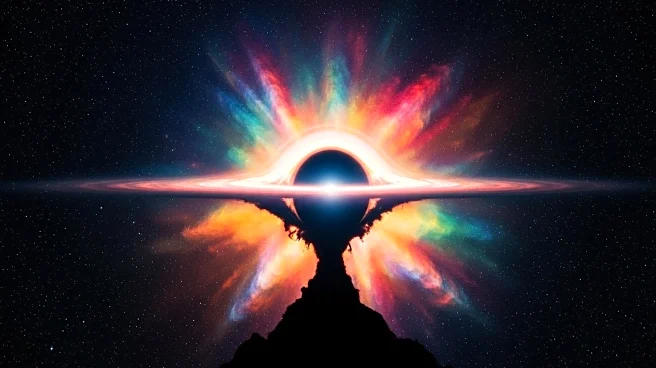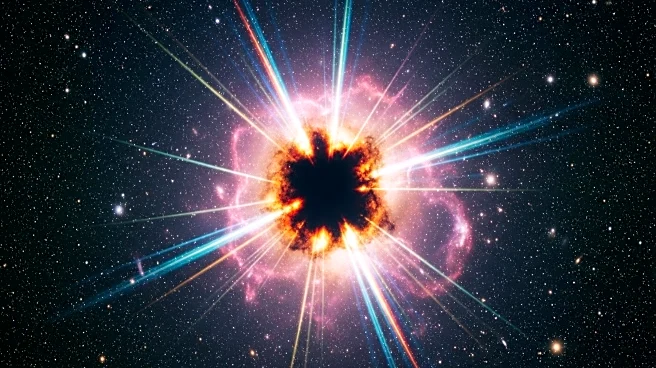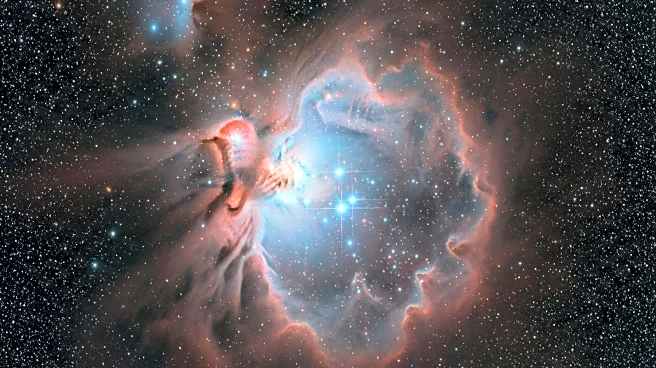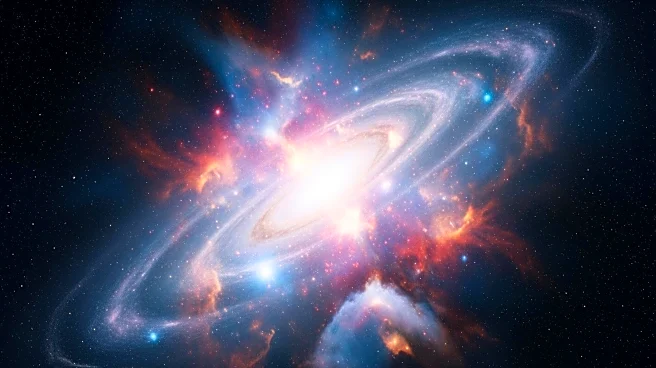What's Happening?
Astronomers have identified a massive 'naked' black hole, named QSO1, using the James Webb Space Telescope (JWST). This discovery challenges existing theories about the early universe's formation. The black hole, weighing as much as 50 million suns, appears to exist without a surrounding galaxy, contradicting the traditional view that black holes form after galaxies. The findings, led by Roberto Maiolino from the University of Cambridge, suggest that black holes might have formed independently in the universe's early stages. This discovery could imply that black holes were among the first large structures in the universe, potentially existing since the Big Bang.
Why It's Important?
The discovery of QSO1 has significant implications for our understanding of cosmic history and the formation of galaxies. If black holes like QSO1 existed independently in the early universe, it could reshape theories about how galaxies and other cosmic structures formed. This challenges the notion that black holes are a byproduct of galaxy formation, suggesting instead that they might have played a more foundational role. Such findings could lead to a reevaluation of the processes that governed the early universe, impacting astrophysical models and our understanding of cosmic evolution.
What's Next?
Further observations and studies are needed to confirm the nature of QSO1 and similar objects. Astronomers will likely continue using the JWST to explore these 'little red dots' to determine if they are indeed black holes or other cosmic phenomena. This research could lead to new insights into the universe's early conditions and the role of black holes in cosmic evolution. The scientific community will be closely watching these developments, as they could lead to groundbreaking changes in astrophysical theories.
Beyond the Headlines
The discovery of QSO1 also raises questions about the potential existence of other 'naked' black holes and their role in the universe. It challenges the current understanding of black hole formation and suggests that the early universe was more chaotic and complex than previously thought. This could lead to new theoretical models and a deeper understanding of the universe's infancy.
